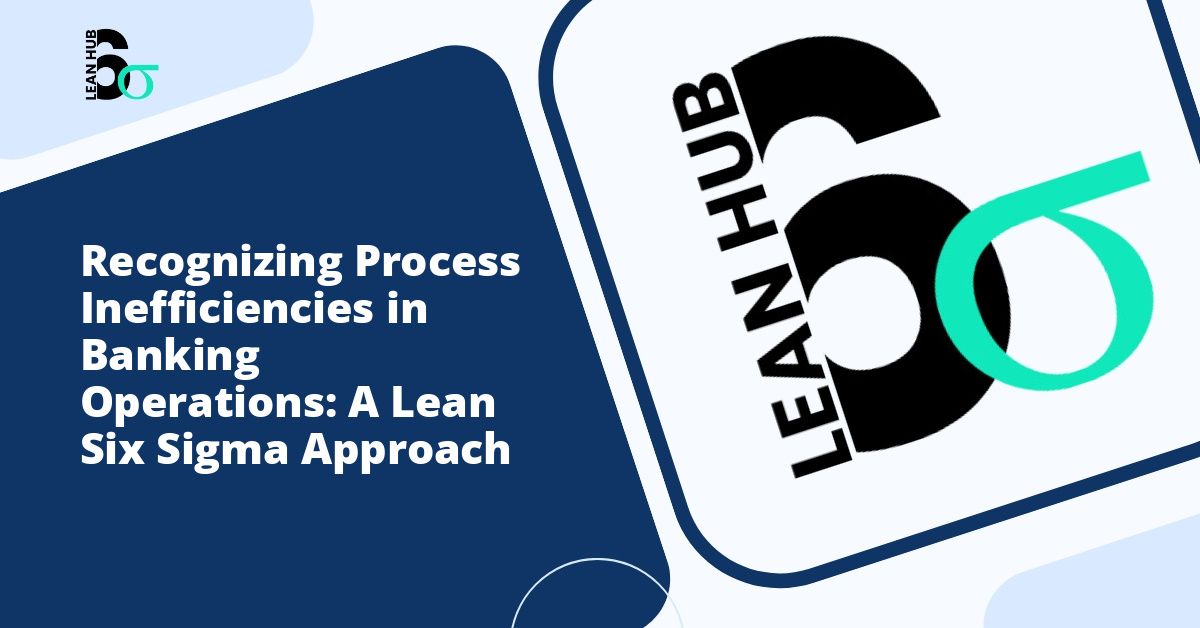The financial services industry operates in an increasingly competitive landscape where efficiency, accuracy, and customer satisfaction are paramount. Banks and financial institutions face mounting pressure to streamline their operations while maintaining regulatory compliance and delivering exceptional service. Understanding how to identify and address process inefficiencies has become critical for survival and growth in this dynamic sector.
Process inefficiencies in banking operations can manifest in numerous ways, from prolonged customer wait times to redundant paperwork, system failures, and costly errors. These inefficiencies not only drain resources but also erode customer trust and satisfaction. Fortunately, methodologies like lean six sigma provide structured frameworks for identifying and eliminating these operational bottlenecks. You might also enjoy reading about Stakeholder Analysis: Who Needs to be Involved in Problem Recognition?.
Understanding Process Inefficiencies in Banking
Banking operations encompass a wide range of activities, including account management, loan processing, transaction handling, customer service, compliance reporting, and risk management. Each of these areas presents opportunities for inefficiencies to develop over time. These inefficiencies often stem from outdated processes, inadequate technology integration, poor communication channels, or insufficient training. You might also enjoy reading about What is the Recognize Phase in Lean Six Sigma? A Complete Guide for Beginners.
Common indicators of process inefficiencies include repeated customer complaints, high error rates, excessive processing times, unnecessary handoffs between departments, and redundant data entry. When these issues persist, they compound over time, creating systemic problems that affect both operational costs and customer experience. You might also enjoy reading about How to Get Buy-In for Your Six Sigma Project During the Recognize Phase.
The Role of Lean Six Sigma in Banking Operations
Lean six sigma has emerged as a powerful methodology for addressing operational challenges in financial services. This approach combines the waste reduction principles of lean manufacturing with the quality improvement focus of six sigma, creating a comprehensive framework for process optimization.
The methodology follows a structured approach known as DMAIC, which stands for Define, Measure, Analyze, Improve, and Control. The first phase, often referred to as the recognize phase or Define phase, is particularly crucial as it sets the foundation for all subsequent improvement efforts.
Why the Recognize Phase Matters
The recognize phase serves as the critical starting point for any process improvement initiative. During this phase, organizations identify problems, define project scope, and establish clear objectives. In banking operations, this phase requires careful attention to detail and a comprehensive understanding of current processes.
Without proper recognition and definition of problems, improvement efforts may address symptoms rather than root causes, leading to wasted resources and minimal lasting impact. The recognize phase ensures that teams focus their efforts on issues that truly matter to organizational performance and customer satisfaction.
Key Areas of Inefficiency in Banking Operations
Customer Onboarding Processes
The customer onboarding process represents a critical touchpoint that often suffers from inefficiencies. Traditional onboarding can involve multiple forms, repeated information requests, extended verification periods, and numerous manual interventions. These inefficiencies create friction in the customer experience and increase the risk of abandoned applications.
Banks that fail to streamline onboarding processes face longer time-to-revenue metrics, higher customer acquisition costs, and increased vulnerability to competitors offering more seamless experiences. Recognizing these inefficiencies requires examining each step of the onboarding journey and identifying unnecessary complexity or redundancy.
Loan Processing and Approval
Loan processing represents another area where inefficiencies commonly accumulate. The traditional loan approval process can involve multiple departments, manual document reviews, redundant credit checks, and unclear communication channels between stakeholders. These factors contribute to extended processing times that frustrate customers and create operational bottlenecks.
Inefficient loan processing also increases operational costs through excessive manual labor, higher error rates requiring rework, and lost opportunities when customers seek faster alternatives. Recognizing these inefficiencies involves mapping the entire loan lifecycle and identifying delays, redundancies, and quality issues.
Transaction Processing and Reconciliation
Daily transaction processing and reconciliation activities can harbor significant inefficiencies, particularly in institutions still relying on legacy systems or manual processes. Common problems include duplicate data entry, delayed posting times, reconciliation errors, and inadequate exception handling procedures.
These inefficiencies not only increase operational costs but also create compliance risks and customer dissatisfaction when transactions are processed incorrectly or experience unexplained delays. Effective recognition of these issues requires detailed process mapping and performance metric analysis.
Customer Service and Support
Customer service operations often reveal inefficiencies through long wait times, frequent call transfers, inconsistent information across channels, and unresolved complaints. These issues typically stem from inadequate knowledge management systems, poor integration between service channels, or insufficient agent training.
Recognizing customer service inefficiencies requires both quantitative analysis of metrics like average handle time and first contact resolution, as well as qualitative assessment of customer feedback and agent experiences.
Methods for Recognizing Process Inefficiencies
Process Mapping and Documentation
Creating detailed process maps serves as a fundamental tool for recognizing inefficiencies. These visual representations help teams understand how work actually flows through the organization, revealing hidden complexities, redundancies, and bottlenecks that may not be apparent in written procedures.
Effective process mapping involves collaboration with frontline employees who execute these processes daily, as they often possess invaluable insights into inefficiencies that management may overlook.
Data Analysis and Performance Metrics
Quantitative analysis provides objective evidence of process performance and inefficiencies. Key metrics for banking operations include cycle time, error rates, cost per transaction, customer satisfaction scores, and employee productivity measures.
The recognize phase of lean six sigma emphasizes establishing baseline measurements that will later serve as comparison points for improvement efforts. Without accurate baseline data, organizations cannot effectively measure the impact of their improvement initiatives.
Customer and Employee Feedback
Direct feedback from customers and employees offers qualitative insights that complement quantitative data. Customer complaints, survey responses, and service interaction recordings reveal pain points in the customer experience. Similarly, employee feedback highlights operational challenges, unclear procedures, and system limitations.
Organizations that actively solicit and analyze this feedback gain early warning of emerging inefficiencies before they escalate into major problems.
Benchmarking and Industry Comparison
Comparing performance against industry standards and best practices helps organizations recognize where their processes fall short. Benchmarking reveals gaps between current performance and what leading institutions achieve, motivating improvement efforts and providing targets for enhancement.
Implementing Recognition Strategies
Successfully recognizing process inefficiencies requires a systematic approach supported by organizational commitment. Leadership must create an environment where identifying problems is encouraged rather than punished, fostering a culture of continuous improvement.
Cross-functional teams bring diverse perspectives to the recognition process, ensuring that inefficiencies are identified from multiple viewpoints. These teams should include representatives from operations, technology, compliance, and customer-facing roles to provide comprehensive coverage.
Regular process reviews should become embedded in organizational routines, preventing inefficiencies from accumulating unnoticed. Many successful banks conduct quarterly or semi-annual process assessments, using lean six sigma principles to guide their evaluation efforts.
Moving Forward After Recognition
Once inefficiencies are properly recognized and documented, organizations can proceed to the subsequent phases of improvement. The recognize phase creates a solid foundation by clearly defining problems, establishing baseline metrics, and building stakeholder consensus around improvement priorities.
This foundation proves invaluable as teams move into deeper analysis, solution development, and implementation. Without thorough recognition of inefficiencies, improvement efforts often fail to deliver sustainable results.
Conclusion
Recognizing process inefficiencies in banking operations represents the essential first step toward operational excellence. Through structured methodologies like lean six sigma and its crucial recognize phase, financial institutions can systematically identify the operational bottlenecks that hinder performance and customer satisfaction.
The competitive pressures facing modern banks demand continuous attention to operational efficiency. Organizations that develop robust capabilities for recognizing and addressing process inefficiencies position themselves to deliver superior customer experiences while optimizing costs and managing risks effectively.
By investing in proper recognition and analysis of their operations, banks lay the groundwork for sustainable improvement that drives competitive advantage in an increasingly demanding marketplace. The journey toward operational excellence begins with recognition, making this phase critical to long-term success in financial services.








